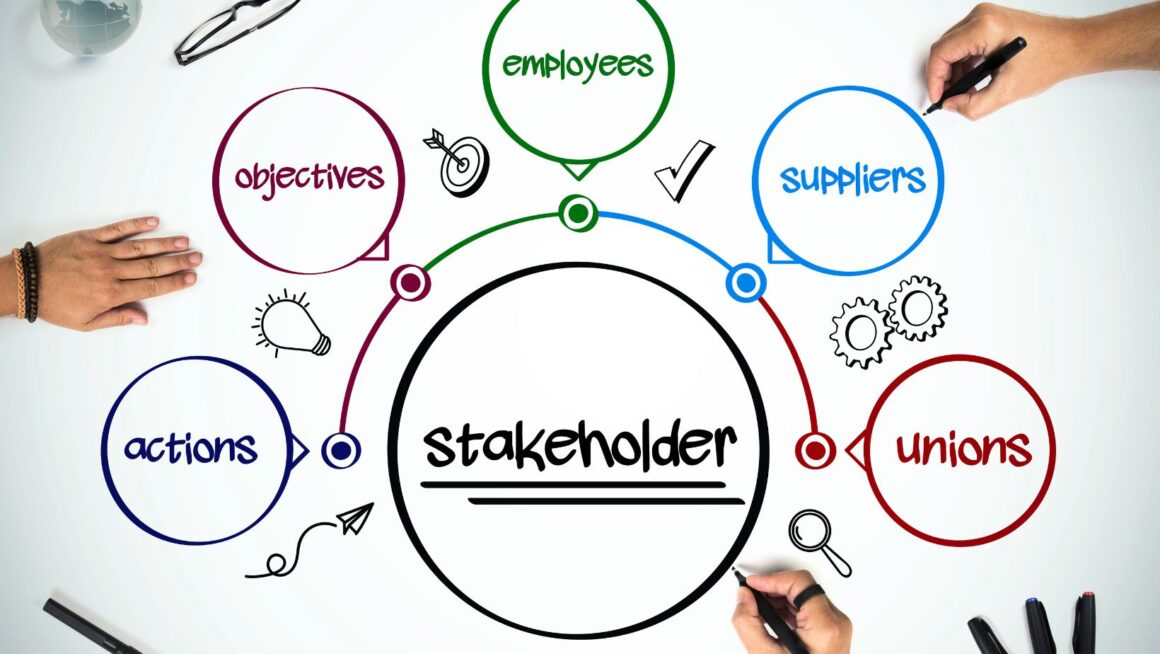Table of Contents
ToggleThe Importance Of Realistic Goals and Communication Plans When Managing Stakeholders
In every project or activity, the people who have an interest in it are very important for its success. These people or groups care a lot about what will happen with the project and can greatly change how it goes and what comes out of it. Managing the expectations of stakeholders might be difficult because they often have different priorities and needs, and how much they are involved can vary. To make sure of a good result, it’s important to create achievable goals and plan out communications well so that these plans meet what stakeholders expect. In this text, we are going to discuss why it is important to handle what stakeholders expect and give methods for making achievable objectives and plans for communicating.
Understanding Stakeholder Expectations
People who have an interest in a project are called stakeholders. What these people want and what they need from the project is known as stakeholder expectations. This can include many things like what results should come out of the project, when it should be finished, how much money will be spent on it, how well the work must be done, and how much say they want to have in everything that happens. If you don’t handle what the stakeholders expect properly, it can cause confusion and disagreements, which might make the project fail. So, it’s very important to know who the main stakeholders are, figure out what they want, and make sure this matches with what the project aims to achieve from the beginning.
Communication Channels
Stakeholder engagement software offers multiple ways to communicate, such as email, chat, forums for discussions, and video calls. This helps teams working on projects talk with stakeholders instantly and use different methods. The software also supports sharing and working together on documents; it gives stakeholders a single place to find project files, reports, and the latest information. It encourages people to work together and makes sure those involved have the newest information and tools available.
Setting Realistic Goals
Making realistic goals is very important for controlling what stakeholders expect. These goals need to have clear details, be possible to measure and achieve, matter a lot to the situation, and have a specific deadline (these are called SMART goals) so everyone knows their responsibilities clearly. When we set goals for a project, it’s important to think about what all the different people involved want and care about. This might mean talking to them one-on-one, sending out questionnaires, or bringing them together in a group to discuss what they hope will happen and what they expect from the project.

Also, it is important to arrange the goals by how significant and possible they are. It might not be realistic to meet every desire of stakeholders because there can be limits with the project’s budget, available resources, or time. So, it might be necessary to talk and make some agreements to decide together on the goals that are most important and can be reached.
Establishing Communication Plans
Good communication is very important for handling what stakeholders expect during the whole project. Plans for how to communicate should describe the way information will be given out, who will take care of talking to others, and how we will collect and respond to opinions. Communicating often with stakeholders is important to create trust, make things clear and be responsible. These are key for keeping good relationships and handling what people expect in a good way.
It is important to customize communication strategies according to what different stakeholders like and need. Some might want meetings in person or discussions over the phone, while others could favor receiving emails or reports that are written down. If project managers learn how each person involved likes to get information, they can share it in a way that’s easy and makes sense for everyone.
Managing Change and Uncertainty
Changes and uncertainties are sure to come up during a project, which can affect what stakeholders expect. It’s very important to manage change ahead of time by making sure stakeholders know what is happening and taking part in the decisions being made. This might mean giving updates about how the project is going often, finding possible risks and problems, and asking for opinions and responses on changes or different ways to do things in the project plans.

When you handle change, being clear and truthful about why the change is needed, what effects it might have on the project results, and any plans to lessen those effects is important. If you include everyone affected by the changes in planning and how to manage them, as a project manager, you can reduce pushback and make sure everyone’s expectations stay in line with what the project aims to achieve.
Conclusion
Handling the expectations of stakeholders is very important in managing projects and needs detailed planning, good communication, and teamwork. When project leaders set achievable aims, make strong plans for communication, and handle changes and doubts early on, they create trustworthiness and openness with everyone involved, which helps a lot to finish projects well. When organizations focus on involving stakeholders and meeting what they expect during all stages of the project, they can make sure these stakeholders are very satisfied and reach their goals.



